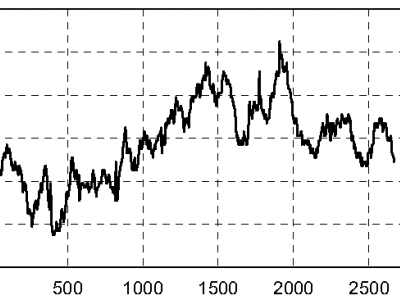Machine Learning
RMUTT-DLD is an aggregated collection of data that encompasses details derived from the IC3 digital literacy certification program conducted at Rajamangala University of Technology Thanyaburi (RMUTT) in Thailand spanning from 2016 to 2023. The expanded dataset includes demographic details, academic records, and certification results, offering a holistic perspective on the progression of students' digital literacy over a period of time. The dataset has the flexibility to be imported into diverse applications, enabling its utilization for various purposes.
- Categories:
 489 Views
489 Views
The training data consists of data from various faults from five individual configurations, while the testing data is blind and is from one individual configuration of the rock drill. A final validation data set will be from two individual configurations from the rock drill and the labels are blind.
The training data set contains data from 11 different fault classification categories, in which 10 are different failure modes and one class is from the healthy/no fault condition.
Each file follows the naming convention of data_{sensor}{individual impact cycle number}.csv.
- Categories:
 148 Views
148 ViewsThis data collection focuses on capturing user-generated content from the popular social network Reddit during the year 2023. This dataset comprises 29 user-friendly CSV files collected from Reddit, containing textual data associated with various emotions and related concepts.
- Categories:
 2195 Views
2195 Views
This research studies the stance classification task of parliamentary debates with the aims to analyse how parliamentarians argue on different debate topic, what is their political stance, and the impact of homophily with respect to their party affiliation. A state-level Australian Hansard data is collected focusing on debates related to obesity and food marketing policies in Australia. It covers 6 states and 1 territory (NT is excluded) from the period 1/1/2000 to 1/1/ 2022.
- Categories:
 72 Views
72 ViewsThis dataset extracts the entropy of each of the PE sections of benign and ransomware reports to be used for detecting ransomware. Several machine learning classifiers were trained on this dataset such as Decision Tree, Random Forest, KNN, XGBoost and Naive Bayes. From the results, PE entropy can accurately detect ransomware with a decision tree classifier yielding the overall best result with a 98.8% accuracy and an AUC of 0.969. The latency with the prediction of the decision tree classifier was extremely quick with a result of 1.509 milliseconds.
- Categories:
 306 Views
306 ViewsWith the rapid development of high-speed trains (HSTs), safety and reliability in HSTs operation have attracted plenty of attention. The wheel, as one of the most crucial components, requires absolutely high reliability. The non-roundness wear is a typical failure mode of the HST wheel, which can have a detrimental influence on track and train components, leading to increased risks of rail breaks, sleeper cracking, high-cycle fatigue of wheels and axles, and bearing damage.
- Categories:
 88 Views
88 ViewsSensor arrays are ubiquitous. They capture images in digital cameras, record the swipes of our fingers on the screens of our phones and tablets, or map pressure distribution over an area. Soft capacitive sensor arrays have been proposed to make electronic pressure-sensing skins capable of identifying the location and intensity of touch. However, large arrays of those sensors remain challenging to produce, as they require high-resolution patterning of electrodes and routing of long and thin electrical connections.
- Categories:
 200 Views
200 Views
A non-speech dataset built by a nine-classification discrete emotion model can be used for emotion recognition. The nine emotion dimensions are happy, angry, fearful, sad, brave, favorite, neutral, and calm. Recognition is performed by extracting their 384-dimensional feature vectors, which contain F0 envelopes, short-time excess zero rates, twelve-dimensional Meier cepstral coefficients, etc., as well as their first-order low-pass data. A total of 2,337 data samples were available.
- Categories:
 28 Views
28 Views
This dataset contains the measurement in an ultrawide band (UWB) system in the 6.5 GHz band, considering the presence of the human body as the only obstacle. There are measurements in line-of-sight condition to compare the results of the analysis performed. The measurements are part of our research on the adverse effects of the body shadowing in pedestrian localization systems.
The UWB system has four fixed terminals and one mobile terminal. The mobile terminal is worn on the chest of the person.
- Categories:
 199 Views
199 Views
We introduce a high-performance computer vision based Intraveneous (IV) infusion speed measurement system as a camera application on an iPhone or Android phone. Our system uses You Only Look Once version 5 (YOLOv5) as it was designed for real-time object detection, making it substantially faster than two-stage algorithms such as R-CNN. In addition, YOLOv5 offers greater precision than its predecessors, making it more competitive with other object detection methods.
- Categories:
 68 Views
68 Views



